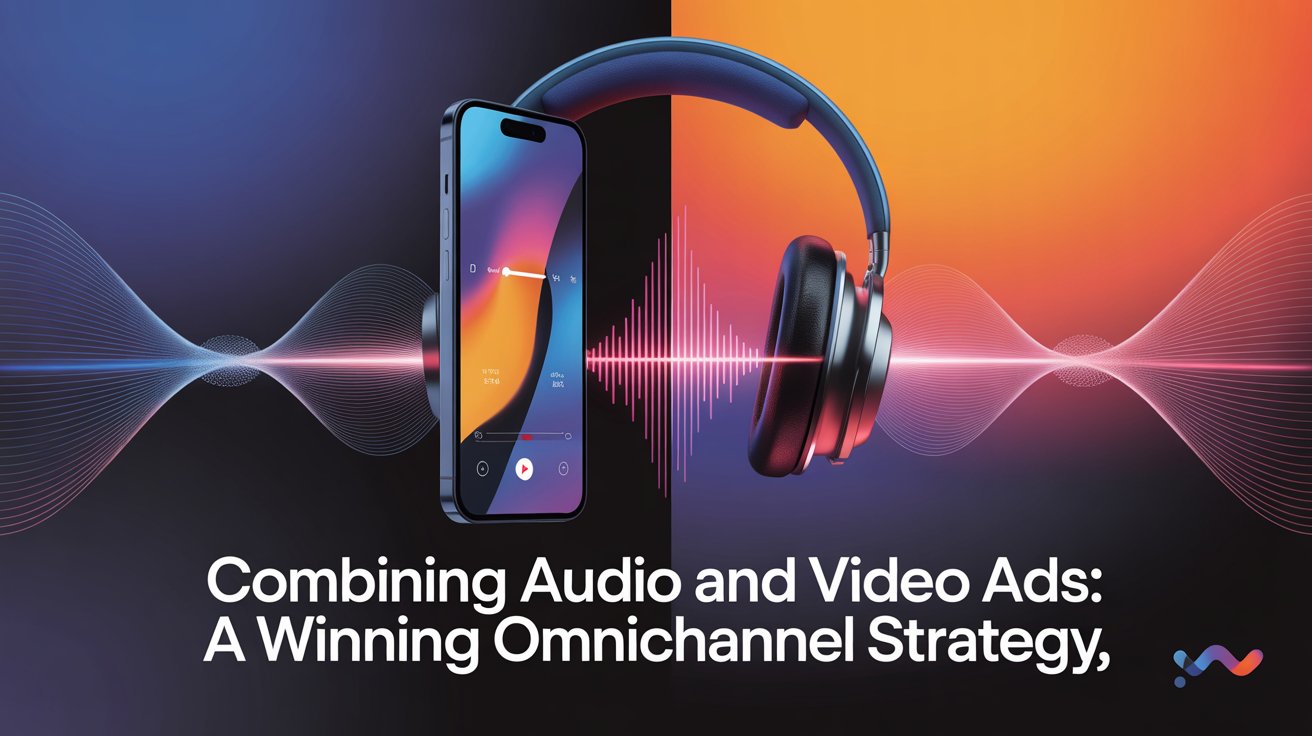Why Your Video Ads Need an Audio Strategy Too
Picture this: you’re glued to a dramatic reality TV show, the tension building, just as a housewife leans in to drop a shocking revelation… and bam—commercial break. You sigh, grab your phone, and walk to the kitchen. You’re not looking at the screen anymore, but in the background, an ad is playing. You don’t see it—but you hear it.
That’s the thing about modern media—audio travels. Even when the visuals disappear, the sound stays with you. Voiceovers, background music, ambient noises, and dialogue—they all shape the message, even when your eyes are elsewhere. That’s what makes audio not just a supporting element but a powerful standalone force. In fact, it’s not much different from audio ads you hear while streaming your favorite music or catching up on a podcast.
Let me give you a real-life example. Just last week, I watched a video ad for a new smartphone brand on YouTube. The visuals were slick, the narration catchy. I didn’t think much about it. But the next day, while streaming music on JioSaavn during my evening walk, I heard the exact same voice from the ad—this time in a short audio-only format promoting the same phone. That moment of recognition made me pause. That’s when it clicked: this wasn’t coincidence—it was strategy.
Audio Builds Worlds Even When Screens Are Off
Unlike passive visual content, digital audio commands attention through personalization. Listeners on platforms like Spotify and Amazon Music are constantly interacting—liking songs, building playlists for their moods, workouts, or commutes. They’re leaning in, not zoning out.
When your video ads are adapted to this environment, you’re reaching people during deeply personal moments. You’re in their ears during a gym session, a drive, or even a lazy Sunday afternoon.
Your Video Assets Can Work Harder
Even if you’re starting with video content, it doesn’t mean you’re stuck with screen-first platforms. With audio-forward media partners, you can use that same video asset—stripped down to audio—to run in ad slots on music apps, podcasts, and even smart speakers. And the best part? These platforms offer 100% share of voice. That means no clutter, no competition for attention—just your brand, clearly heard.
Because these ads are played only when users are actively engaging, completion rates soar and every impression counts. It’s not background noise—it’s an intimate connection.
Podcasts Are Redefining Reach Across Platforms
Audio storytelling has exploded with the rise of video podcasts. Shows once limited to Spotify or Apple Podcasts are now also available on YouTube and other video platforms. This dual-format approach is reshaping the way audiences connect with content and with advertisers.
According to a 2025 SiriusXM Media study, 48% of podcast listeners feel like their favorite hosts could be friends. That’s the kind of authentic connection brands dream of. With video podcast ad formats—like visual host reads or custom branded segments—you’re not just reaching ears and eyes, you’re tapping into trust.
Digital Audio Adds Incremental Reach
Still not convinced? Studies show digital audio brings incremental reach—reaching people that your video campaigns alone might miss. SiriusXM Media reports that pairing digital audio with video on OTT or Connected TV can add up to 50 extra points in reach. That’s a big deal, especially in competitive markets where every new impression matters.
Audio Isn’t a Companion—It’s a Catalyst
This isn’t just about filling gaps when people aren’t watching. It’s about understanding how people live. Music, podcasts, and talk shows are part of people’s routines. They define moods, fuel memories, and often reflect personal identity.
Digital audio marketing taps into those emotional spaces—making it one of the most versatile and memorable tools in your media mix.
In Short:
If you’re investing in video but ignoring audio, you’re leaving reach and resonance on the table. Don’t just show your message—let people hear it, remember it, and live it.
Also Read – Delhi Metro Advertising

